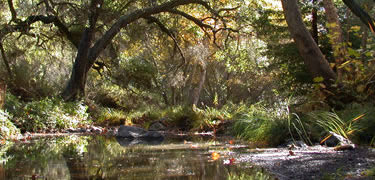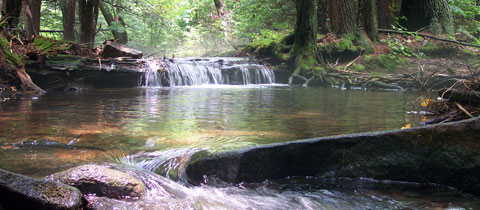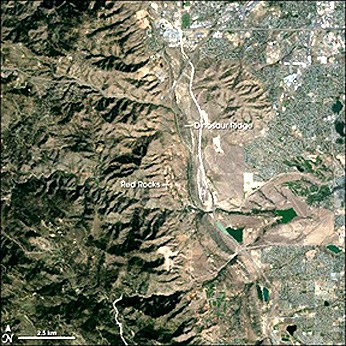Yes I know that the FS thinks it has a Planning Rule blog. But it doesn’t. Not a real blog anyway. All it has, so far, is a poor excuse for a comment aggregator. The other day I decided to leave a comment on Peter Williams’ recent post on the “official blog”. Guess what? The so-called blog won’t accept comments that include paragraph breaks. No HTML is allowed. And, best I can tell, even simple “http” references are not converted to active links. So I decided that until and unless the FS is willing to at least fix the paragraph breaks problem—or tell folks how to use the blog so that it will include “breaks”—I will just use real blogs outside the “official” smokescreen. Here is the comment I intended to post as a response to Peter, slightly edited:
Here is my “take” on Peter Williams’ final two questions, restated a wee bit:
How might the planning rule provide for an all lands approach and address the contribution of NFS lands to local communities?
- How can the new planning rule, by itself or as a road map for developing forest plans, reflect the interdependency of social, economic, and ecological systems in a way that supports sustainable management of national forests and grasslands?
- How can it help provide or ensure opportunities for goods and services to support vibrant rural, regional, and national economies?
My guess is that any planning rule that is developed in the long tradition of “rules” dating back to 1979 will not be helpful in achieving the goals embedded in the questions. Why? Because the focus of each “rule” has always been on developing a “Forest Plan” as if there were wide discretion in that process and “as if” the forest administrative unit made sense as an overall “catchall” for decision-making. Neither is the case.
One problem is that there can not be wide discretion in forest-level decision-making if only because the ecosystems embedded in each administrative unit of the national forest system are themselves part of broader ecosystem wholes, e.g. larger watersheds, larger “basin and range” systems, both, and more. This means that what works for sustainability (instead of against) re: “forest subsystem contributions” to ecosystems must be informed by the needs of broader wholes. So too with social systems. An “all lands approach” must be scaled, hierarchically, to guide development of plans at subscales. Maybe a NFMA “rule” can address such, but we haven’t seen one yet. Only with such an adaptive management assessment information system could forest-level decision-making begin to make any sense. And the ecosystems/social systems scale problem is but one of many problems that impede wide discretion in decision-making. Another is what I call the “wicked problem” problem.
The Forest Service has never (to my knowledge) addressed “wicked problems” (Wikipedia link: http://en.wikipedia.org/wiki/Wicked_problem. Such problems were first introduced to the Forest Service in 1986 by Allen and Gould (Journal of Forestry) and to the world by Rittel and Webber in 1973 (Policy Sciences). Anyone who has studied forest management problems knows that they are indeed politically wicked and cry out for approaches much different from the “comprehensive rational planning” approach that the Forest Service always gravitates toward. Even when dressed up with terms like “adaptive” or “adaptive management” the reality of the approaches used always have rational-planning at their core.
One thing is certain when dealing with wicked problems: You can only hope to accomplish anything when you are able to define the scope the problem (time, space, issues, etc.) into “decision containers” that people (stakeholders, administrators, etc) can get their minds around. It seems that traditional “forest plan” containers are hopelessly over-filled when land management zoning, land management goals and objectives, program goals and objectives, and related “standards and guidelines” are all in play — and “in play” in a spatial container that isn’t really relevant to many of the objectives at hand. I have long felt that rational planning approaches simply can’t work. Here is how I put it in my Epistle to the Clinton-era Committee of Scientists (link: http://www.fs.fed.us/eco/eco-watch/cos_greenplans.html) , written when I was an employee of the Forest Service:
… [W]e have failed to learn the lesson that there is a difference between complex problems and wicked problems (see: G.M. Allen’ and E.M. Gould. 1986. “Complexity, wickedness, and public forests.” J.For 84(4):20-23, also Henry Mintzberg. 1994. The Rise and Fall of Strategic Planning). According to Allen and Gould, politically wicked problems can not be solved by any multi-step planning process designed to “collect more data, build bigger models, and crunch more numbers … [expecting that] surely the right answer would be forthcoming.” Allen and Gould suggest that the Forest Service’s general operating norm for planning–more data, fancier analysis, more computing power, more scientists–reflects a “naive hope that science can eliminate politics.” This problem went unresolved–is still unresolved–because [Forest Service] ‘professional arrogance’ wouldn’t allow [the agency] to admit that national forest management and planning is ‘political’.
Why not try adaptive management, better still Adaptive Co-Management (Resilience Alliance Link: http://www.resalliance.org/2448.php) when thinking in terms of an “all lands approach”. Note here that the adaptive management I’m talking about is multiple-scale oriented, addresses wicked problems, and involves double loop learning (More here: http://en.wikipedia.org/wiki/Organizational_learning). Maybe such adaptive co-management can be and will be fit into the NFMA “rule” rewrite. But I doubt it. As I mentioned in an earlier post, I hope I am proven wrong.
Final thought: If adaptive co-management is to work, decision-makers will have to constantly check and “be checked” to make sure that decisions (cumulatively) aren’t afflicted with policy “decision traps.” E.g. a set of decisions might be afflicted with “policy drift” — a “tyranny of small decisions” that eventually runs counter to policy aims due to the cumulative effects of sequential or segmented decisions.





